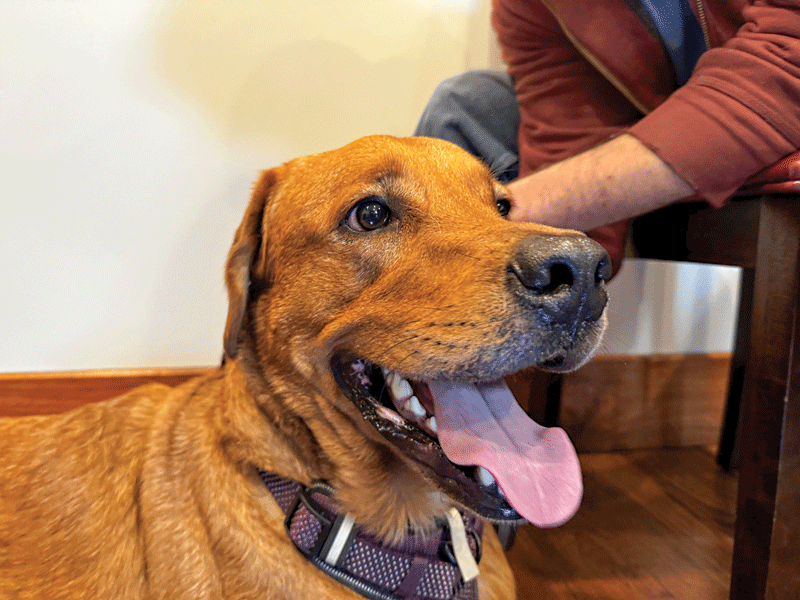
All of us in the veterinary community know sticks are bad for dogs to chew on. However, the general public still has not received the message clearly enough. Some dog owners think it is desirable for their pets to chew on sticks and logs.
Dogs and sticks are a natural combination: they go together like milk and cookies. However, sticks can be sharp, and even those that do not start off as sharp can become sharp when they are gnawed.
Presentation
There are three common manifestations of oral lesions created by dogs chewing on sticks. We saw a case of the most common manifestation recently in the clinic. A large mixed-breed dog named Baloo presented for an oral examination relating to excessive pawing at his mouth, abnormal facial contortions, and lip licking. These behaviors occurred shortly following a veterinary visit for vaccines, after Baloo came home and went outside. When urged to come back in to the house, Baloo was frantically pawing at his face, opening his mouth very wide, and lip smacking.
The primary care veterinarian who was contacted recommended diphenhydramine, in case these signs were a manifestation of a vaccine reaction. The diphenhydramine did slow the signs, but Baloo still made the odd jaw motions the following morning. Baloo continued to eat without difficulty.
Baloo presented on day two for an examination. On conscious oral examination, we noted a stick lodged between the maxillary fourth premolars. The stick sat nicely in the depths of the palatine rugae (Figures 1). The dog was amenable to allowing us to retrieve the stick without sedation. After removal, we assessed for soft tissue damage to the palate.
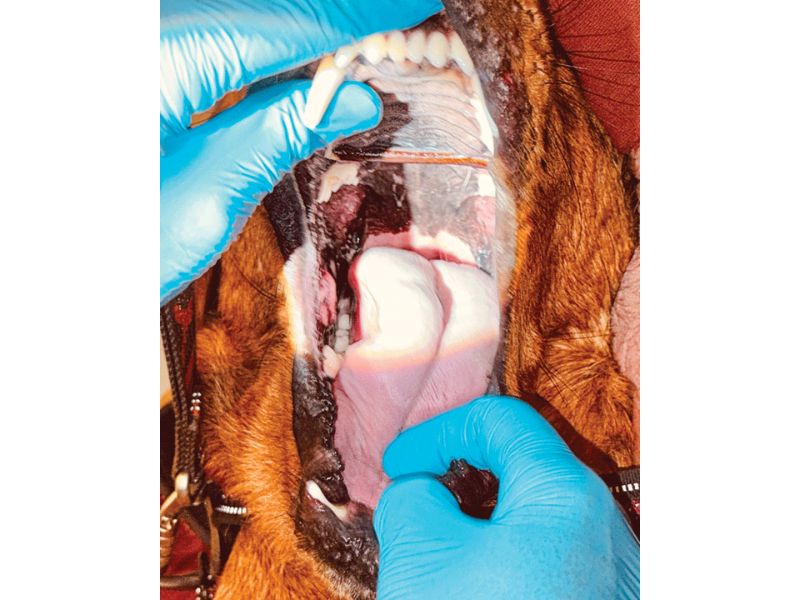
Luckily, in this case, there was not significant damage to the soft tissue and underlying hard tissue. In some cases, however, where the stick is lodged for days or weeks, severe erosion of the palatal mucosa can occur, and the attachment structures of the teeth may be irreversibly affected (Figure 2).
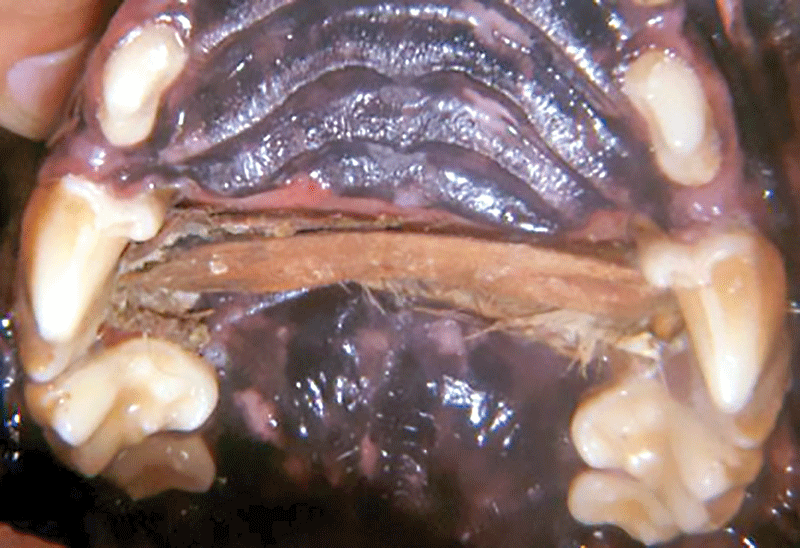
Complications
Another manifestation of stick chewing we see in the oral cavity is a widened space between the maxillary fourth premolar and the maxillary first molar tooth. The lodged stick can act like an active orthodontic device to increase the space between the teeth, often causing gingival recession in the process. If you look closely at patients presenting for dental cleanings, you will notice an increased space between these teeth on one side and normal spacing on the other side. This is often due to a foreign body that has since dislodged but resulted in increased interdental space that persisted long after the foreign body became dislodged.
A potentially more dangerous manifestation of stick chewing is when there is an attempt to swallow a sharp stick, and it punctures the sublingual mucosa just medial to the mandible, or the pharyngeal mucosa and lodges there as a foreign body (Figures 3A and 3B).1
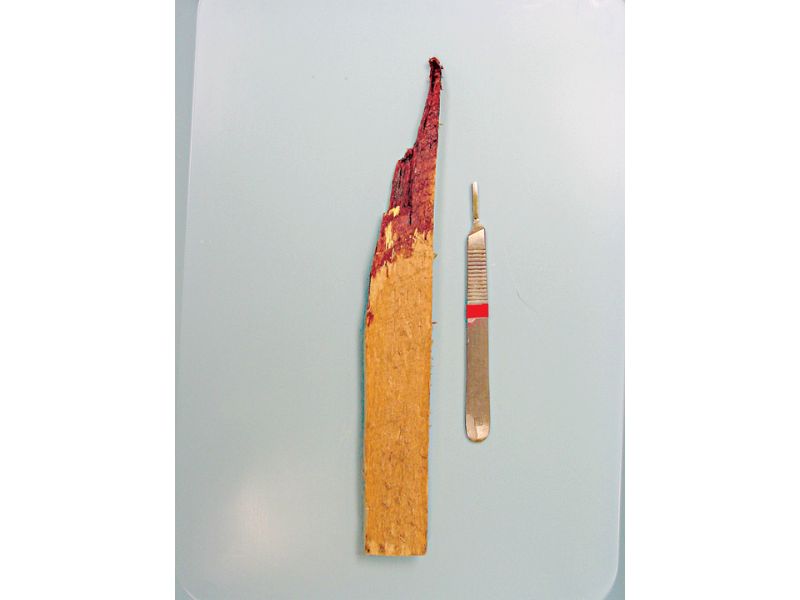
Sticks lodged in these areas can sometimes be undetectable after oral mucosa heals over them. Swelling in the intermandibular space or in the neck can occur due to persistent abscesses that improve while the patient is on antibiotics but will recur when ceasing antibiotic therapy. These foreign bodies can be like finding a “needle in a haystack” and even though they do not always show up on CT scan, advanced imaging with contrast is warranted.
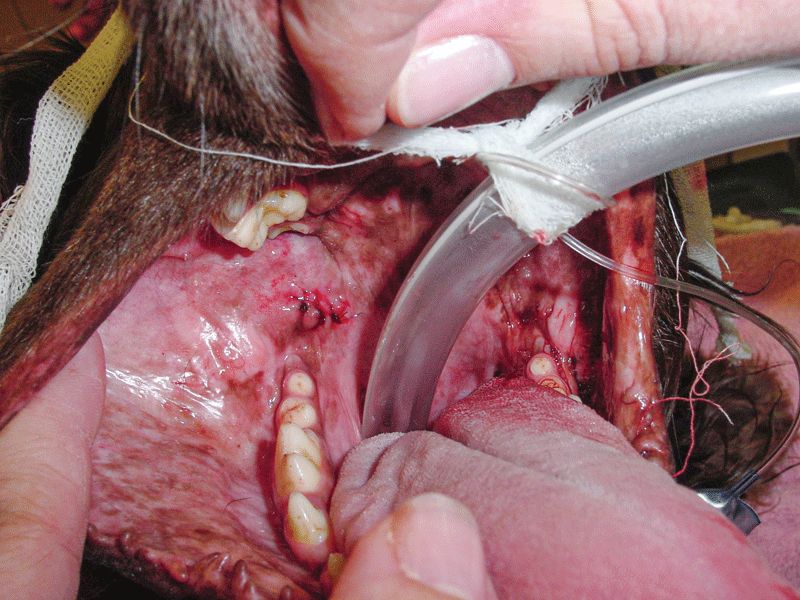
In a population of 39 dogs suspected to have stick or plant foreign oropharyngeal foreign bodies in dogs undergoing surgery after preoperative CT scan, resolution of clinical signs was observed after a single surgical procedure in 95 percent of the cases. All animals in which a foreign body was identified on CT scan were cured.2
However, sticks can be even more deadly than just causing a foreign body in the head and neck region. Long after we graduated, my roommate from undergrad, Dave, called me to tell me about his golden retriever. The dog had to have a thoracotomy and lung lobe removed due to a stick that punctured the esophagus and migrated into the chest cavity. Tens of thousands of dollars later, the dog did well.
When clients bring their pups in for exams to your practice, spread the word about sticks. Provide alternatives that are safe for the teeth and safe for the body. Next month’s column will discuss appropriate chew items! Here is a preview: with only a rare exception, it is not a good thing if a chew item lasts forever.
John Lewis, VMD, DAVDC, Fellow, AVDC OMFS, practices at Veterinary Dentistry Specialists and teaches at Silo Academy Education Center, both in Chadds Ford, Pa.
References
- Lewis JR, Reiter AM (Syring R, Beal M, Drobatz K, eds). Soft Tissue Injury of the Head and Neck (Oropharyngeal Injury). Trauma Management in the Dog and Cat. Oxford, UK: Wiley Blackwell. 2011; 279-292.
- Manzoni S, Santos M, Leveugle A, et al. Preoperative computed tomography, surgical treatment and long-term outcomes of dogs with abscesses on migrating vegetal foreign bodies and oropharyngeal stick injuries: 39 cases (2010-2021). J Small Anim Pract. 2023;64(9):581-589.
